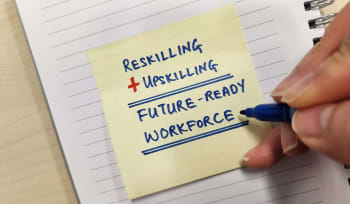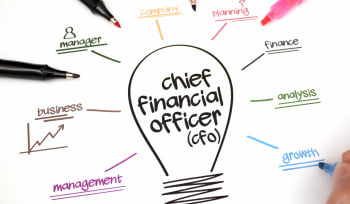This informal CPD article on Product marketing’s role in the product lifecycle was provided by Product Marketing Alliance, a company founded in 2019 with a mission of uniting product marketers across the globe.
Broadly speaking, there are five stages within any product’s lifecycle and as a product marketer, it’s important you’re familiar with these cycles because what stage a product is at will heavily influence your role and goals.
So, let’s start with a quick tour of the five phases:
- Development
- Introduction
- Growth
- Maturity, and
- Decline
And now let’s take a deep dive into each in more detail.
The development stage
The development stage is an internal one where you and other business areas research, develop, and test new products or features, and this phase is instrumental. If you try to take shortcuts here, they’ll soon show in the subsequent stages.
During this part of the lifecycle, your focus will be primarily on:
- Finding out what the market wants by speaking to them
- Analyzing the competition landscape
- Understanding your customers, and
- Defining what their must-have requirements are
By the end of this stage, you should have a very clear understanding of who your target market is and what their needs are, as well as an in-depth understanding of the product or feature itself.
The introduction phase
Next is the introduction phase, this happens as soon as your product or feature is made available to the market. A lot of people make the mistake of trying to run before they can walk here, but before you think about putting money behind big marketing and awareness campaigns, you need to spend time testing and ironing out any kinks. That way, when you do go hard with your marketing, you can be sure you have the best possible version of your product and its positioning.
So in this stage, you want to be working on activities that help you answer questions like:
- How are people reacting to our product?
- What do they like and dislike?
- How do they feel about us against our competitors?
- Do they have any reservations about our product?
- Are there any needs our market has that we’re not addressing?
Knowing these answers and putting changes in place that address them will put you in a much stronger position for when you go out to the masses, saving you a tonne of money.
The growth phase
The middle phase is growth and this is when you’ll start to throw more spend behind your marketing activities, see sales come in, and continually tweak, refine and improve what you’re currently doing in terms of both promotions and your actual product.
It’s important to remember that during this phase the market and competition will change, and that means perceptions will too. Because of this, it’s essential you don’t rest on your laurels and that you’re continually keeping on top of what customers want and what competitors are doing and changing your strategy accordingly. Questions you’ll want to ask yourself include:
- Does our messaging still work?
- Are we differentiating ourselves enough from the competition?
- Are our customers crying out for new features?
- Are we looking for customers in the right places?
The maturity phase
The penultimate phase is maturity and this is where sales will begin to somewhat plateau and your focus shifts to maintaining your industry authority and market share. By this point, your market will have probably flooded with competitors, which can make differentiating yourself even harder and because of this, the maturity phase is often a time to look for ways to reinvent your business model and do something others aren’t.
As such, speaking to customers is critical. Find out what their wants are now – because they’ll have changed since the introductory stage, and use this insight to feed your product teams with new product or feature ideas. Also, consider entering new market segments to increase your revenue stream in verticals your competitors perhaps aren’t already actively targeting.
This stage is all about seizing opportunities and taking calculated risks to do something that’ll make you really stand out from the crowd.
The decline phase
The decline phase probably relies on product marketing the least because during this stage marketing budgets are usually reduced.
Products can decline for a number of reasons, maybe there’s no longer a need for them – like the way DVDs are being replaced by things like Netflix, customers’ needs change, technology’s changed, or maybe a company made a mistake – like a dodgy batch of products, and just wasn’t able to recover from it.
During this stage, businesses tend to either:
- Reduce marketing spending
*Implement price cuts – which could impact how you position your product
- Find another use for their product – which would involve a big positioning and messaging overhaul and whole new set of customer research and analysis
- Wait for the demand to come back, get acquired by another company, or
- Discontinue the product full stop
Not every product marketer will necessarily see this phase, and in an ideal world, the work you and other key business areas do will prevent product decline in the first place, or the decline of one product will make room for a new product or a suite of products.
We hope this article was helpful. For more information from Product Marketing Alliance, please visit their CPD Member Directory page. Alternatively please visit the CPD Industry Hubs for more CPD articles, courses and events relevant to your Continuing Professional Development requirements.













